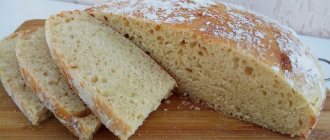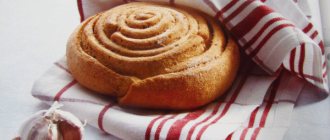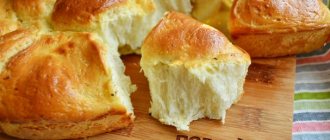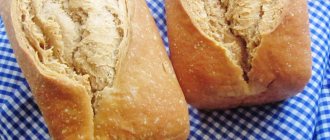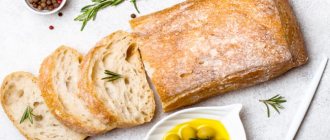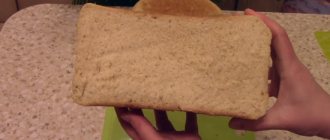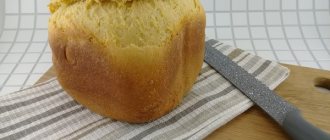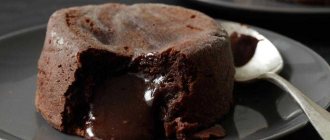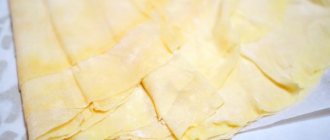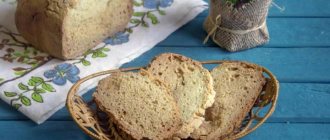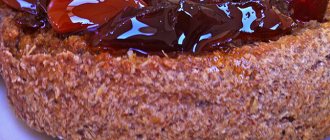Real, high-quality bread, which was baked according to all the rules, based on centuries of experience and supported by scientific knowledge, is still “the head of everything.”
Baking bread at home, in a regular home oven, has become fashionable all over the world. The aroma of freshly baked bread creates an incomparable feeling of home. And you are absolutely sure that this is bread in which there is nothing superfluous, only products created by nature and your love.
Bread is simply flour, water, yeast and salt. Four ingredients that, when handled correctly, turn into a “brick” with a fine, sponge-like crumb and a brown crust, or into a golden baguette crispy on the outside and creamy on the inside, into a “holey” ciabatta or into rustic bread, like grandma baked in her oven.
Photo: Arseny Kosterin, Ekaterina Morgunova
Where to begin?
Recipe
There are about as many bread recipes as there are people who bake them. Therefore, it is very important to choose a recipe from a good book or blog of a person who is passionate about baking bread and generously shares his knowledge, responds to comments in detail and in simple words.
To start, stick to a recipe that has just four ingredients: wheat flour, water, salt and yeast.
It is very important that all ingredients are expressed in grams: spoons, glasses and pinches are different for everyone, and we really don’t want to take it out of the oven in complete disappointment and not lose interest and desire to bake further.
Flour
Flour is the basis of any bread. It is its weight in any recipe that is taken as 100%, and the weight of other ingredients is calculated as a percentage of the weight of flour. This is called the "baker's percentage." Thus, the absolute concepts of “a lot” or “little” lose their meaning, and relative concepts come into force: “a lot or a little relative to the amount of flour.” You just need to remember this once and for all.
It sounds difficult at first glance, but we studied percentages in mathematics lessons in the sixth grade of high school. It's time to remember!
Article on the topic
The agony of choice. What to bake pies and pancakes from
The main flour for baking bread is wheat flour, made from soft wheat. The packaging will most often say “baking flour” and indicate the grade: extra, highest, first or second. Buy the grade that is indicated in the recipe; if it is not specified, take the highest.
The flour in our stores is always different, but it is best to choose either a product from a local manufacturer or from a reliable large enterprise where quality is carefully monitored.
Flour consists of 66-80% carbohydrates (starches), 9-14% protein, of which two - glutenin and gliadin - are especially important for baking bread, the rest is fats, sugars and minerals.
Water
Water is the simplest yet most important ingredient in bread dough. In its presence, starches and proteins swell, and gluten begins to develop, which subsequently forms a “framework” capable of retaining carbon dioxide and steam. Yeast and salt dissolve in water; without it, the process of yeast propagation and flour fermentation is impossible.
Water is responsible for the consistency of the dough, and its temperature allows you to reach the required temperature of the finished dough by the end of the kneading.
For bread, it is best to use water of moderate hardness, with a mineral content (calcium and magnesium ions) in the range of 100–150 mg/kg.
Minerals are food for yeast, which means their presence contributes to the fermentation of the dough. Too hard water excessively strengthens the gluten and reduces the flour's ability to absorb water, thus slowing down the fermentation process. Using water with low mineral content (soft water) results in a sticky, shapeless dough.
Filtered water may be soft, mineral water may be hard. Therefore, it is best to use ordinary tap water - significant deviations towards too soft or hard water are quite rare.
Photo: Arseny Kosterin, Ekaterina Morgunova
Yeast
Little workers - microorganisms of the species Saccharomyces cerevisiae - take responsibility for loosening the bread dough. In fact, they enable the fermentation of flour and the fermentation of dough by breaking down the starches in the flour and converting them into sugars. Yeast produces not only carbon dioxide and ethyl alcohol, but also flavor molecules. As a result of fermentation, many voids are formed in the dough, it grows in volume, and at the same time the taste and aroma of the future bread are formed.
In bread dough, the amount of yeast (pressed) does not exceed 2% of the flour weight; in butter dough, for a number of reasons, their amount is increased to 2.5–5%.
- Pressed
Pressed yeast, sometimes called “live” or “fresh”, consists of 70% water. They look like a piece of slightly damp beige plasticine. Pressed yeast of good quality smells pleasant, does not crumble or spread. Fresh yeast is sold in many online stores.
Article on the topic
Live and in a bag. What are the differences between baker's yeast?
- Dry
Dry quick-acting yeast (instant) can be considered the best replacement for pressed yeast. Even if you bake mostly with compressed yeast, keep a small packet of instant yeast at home to be on the safe side.
Dry instant yeast is added directly to the flour. They are taken 3 times less in weight than pressed ones (12 g pressed = 4 g dry fast-acting).
And vice versa - if the recipe specifies instant yeast and you need to replace it with compressed yeast, multiply the weight of dry yeast by 3.
- Active
Packets of active yeast - large balls about the size of millet - lie on the shelves next to instant yeast. But these are two different products!
Active yeast must first be activated in warm (35 degrees) water with the addition of a small amount of flour and sugar and used after 30 minutes.
They are taken 2.5 times less in weight than pressed ones (12 g pressed = 4.8 g dry fast-acting).
Try baking the same bread using all three types of yeast, do a blind taste test and decide which result you like best. This is the only way to feel (or not feel) the difference and choose “your” yeast.
Photo: Arseny Kosterin, Ekaterina Morgunova
Salt
Despite the relatively small amount of salt in the dough - 1.5–2.0% by weight of flour - its role in the dough can hardly be overestimated. Salt adds flavor, strengthens gluten, gives the dough “body,” and helps retain carbon dioxide released by the yeast. If you forget to add salt to the dough, it will become “sluggish,” vague, unruly, and the finished bread will become flat and tasteless.
At the same time, salt, as a moderate antiseptic, inhibits the fermentation process. In addition, salt prevents the oxidation of the dough during kneading, due to which the color and aroma of the flour are preserved and the characteristic color of the crust is formed.
For baking bread, it is better to choose finely ground salt, no matter whether iodized or non-iodized, sea or rock. It is very important to accurately measure salt and weigh it, just like all other ingredients.
And something else...
In addition to the four main ingredients, the dough can contain many others: butter or vegetable oil, milk and dairy products, eggs, sugar. It is they who turn bread into rich buns, and the more of them, the softer and more tender the dough will be. But there are, of course, limit quantities for each ingredient. Thus, excess sugar slows down the work of yeast, up to a complete stop; fat prevents the development of gluten. Everything is good in moderation, so just stick to the recipe both in terms of the number of ingredients and the sequence of actions. Believe me, all complications have their meaning.
From hops and potatoes. How to prepare yeast and starter cultures at home Read more
From recipe to bread
With all the variety of recipes, you can write them down in just a few lines. Because the steps that need to be taken are always about the same: kneading the dough, fermenting, dividing, shaping, proofing and baking.
A good recipe always contains two parameters: time and temperature. Fermentation of the dough occurs at temperatures from +4 to +35 degrees: at the lower limit, the yeast goes into suspended animation, at the upper limit, alcoholic fermentation stops. Yeast multiplies most actively at 28–30 degrees, but you need to understand that the longer the fermentation process, the better the flour is fermented and the more flavoring substances accumulate in the dough.
It is not always possible to create ideal conditions at home, just try to follow the recipe recommendations and monitor the condition of the dough.
Article on the topic
Director of the Research Institute of the Baking Industry: Bread is the basis of a healthy diet
Inventory
The most expensive purchase you can make to bake homemade bread is a stand mixer. It makes kneading much easier and faster, but any bread dough can be kneaded without it.
But it’s better to buy electronic kitchen scales right away: they will help you avoid mistakes and get stable results.
To ferment the kneaded dough, you will need a bowl or rectangular container, preferably with a tight-fitting lid. Instead of a lid on a round bowl, a regular shower cap will do.
The fermented dough must be divided into portions. This is conveniently done with a plastic scraper, which you can buy at a bakery and pastry shop or order online. The same scraper will be useful for kneading dough.
After the dough has been divided into portions and given its final shape, you need to take care of how the dough will prove while waiting for baking: in the same metal, glass or earthenware form in which tin bread and pastry will be baked, or in a bowl, colander or a special basket. The bowl and colander should be lined with linen or cotton cloth rubbed with flour or baking paper. This will make it convenient to transfer the prepared product to a hot baking stone.
A baking stone heated for an hour is needed so that the workpiece is baked from both sides from the very beginning: from below - from the oven hearth and from above - from the heated air. The stone can be successfully replaced by a cast-iron roasting pan, a roasting pan or a spacious cauldron, which can be placed in an oven preheated to 235 degrees, along with a lid. This is even more convenient than a stone, because at the beginning of baking, steam forms under the lid, which moistens the surface of the bread and allows it to increase in volume as much as possible.
Be careful when choosing baking paper: the packaging should allow use at temperatures up to 250 degrees.
You'll also need a spray bottle of water, like the one used to spritz clothes before ironing.
Advice from wise grandmothers
To make your baked goods soft, fluffy and tasty, read a few tips:
- Products for preparing the batch must be at room temperature.
- To ensure that the baked goods are fluffy, only the highest grade flour with a high gluten content is used. This type of flour is produced from durum wheat. When kneading, the highest grade dough does not spread, it turns out elastic, and keeps its shape.
- To saturate the air necessary for yeast fermentation, the flour must be sifted through a sieve.
- the dough is very afraid of drafts. To raise it, place it closer to the heat source, cover it with a thick cloth, or place the dishes with the dough in a larger basin with hot water.
Country bread with whole grain flour
Photo: Arseniy Kosterin, Ekaterina Morgunova
Whole grain flour not only changes the taste and texture of bread, but also increases its nutritional value, enriching it with fiber and minerals.
Ingredients
- Wheat flour varieties – 425 g
- Whole grain millet. flour – 75 g
- Room water pace. – 330 ml
- Pressed yeast – 12 g
- Salt – 10 g
- Vegetable oil - for greasing the bowl
Article on the topic
Medicine and everything is the head.
Where and what kind of bread is best to buy? How to cook
1. Dissolve the yeast in 310 ml of water, add both types of flour and mix with your hands or a wooden spoon so that no dry flour remains. Cover the bowl with the dough and leave at room temperature (22–24°C) for 20–30 minutes.
2. Add salt and remaining water. Knead the dough until homogeneous and smooth. Place the dough in a clean bowl greased with vegetable oil and leave to ferment until doubled in size, about 2 hours at room temperature.
3. After 30 minutes from the start of fermentation, transfer the dough to a lightly floured table and flatten it into a rectangle. Fold in thirds first along the long side, then along the short side. Return the dough to the bowl, seam side down. Repeat again after 30 minutes.
4. Transfer the fermented dough to the counter, knead to remove large bubbles, and gather into a ball. Cover with film and leave to “rest” for 15–20 minutes.
5. Line a colander with parchment paper. Gather the dough into a tight ball again, trying to create a taut surface. Place it in a prepared colander, smooth side up, cover with film and leave to proof for 75–90 minutes at room temperature.
6. An hour before baking, place a rack in the lower third of the oven. Place the roasting pan on the rack, covering (but not closing!) the lid. Turn on the oven, setting the temperature to 235 degrees and the “top + bottom no fan” mode.
7. When the dough is ready to bake, very carefully remove the lid from the roasting pan and place it on a hot rack. Place a hot roasting pan on the stove. Lift the dough out of the colander by the edges of the paper and very carefully place it in the Dutch oven. Close the lid and place in the oven.
8. Bake the bread covered for 20 minutes, then remove the lid and bake the bread for another 20-25 minutes. If the crust browns too intensely, reduce the oven temperature to 220–215 degrees.
9. Immediately transfer the baked bread to a wire rack and cool to room temperature.
Cooking bread at home: baking temperature
It is enough to simply prepare a fresh baked product within the walls of your own kitchen. All you need is a modest assortment of ingredients, patience and culinary inspiration.
- 214 ml warm water;
- 60 g white sugar;
- 9 g yeast;
- 600 g bread flour;
- 430 ml olive oil;
- 9 g salt.
Place the water, sugar and yeast and water in the bread maker container. Allow the yeast to dissolve and foam for 8-11 minutes. Add butter, flour and salt to yeast. Select the “Basic” or “White Bread” mode, press start.
Butter buns
Photo: Arseny Kosterin, Ekaterina Morgunova
Ingredients
- Wheat flour varieties – 500 g
- Pressed yeast – 15 g
- Salt – 6 g
- Sugar – 60 g
- Butter – 50 g
- Eggs – 100 g
- Milk – 100 ml
- Water – 100 ml
- Vegetable oil - for greasing the bowl
- Butter – for preparing the pan
- Egg for greasing buns – 1 pc.
For sprinkling:
- Crumb made from 50g flour, 50g sugar and 25g cold butter
- Mac - to taste
- Sesame - to taste
Article on the topic
Rolls, loaves and bread.
About the benefits and harms of bread How to cook
1. Dissolve the yeast in water at room temperature. Combine all ingredients and knead into a smooth, non-sticky dough. If you knead the dough by hand, it will take 15–20 minutes.
2. Transfer the dough to a bowl greased with vegetable oil, cover and leave to ferment at room temperature for 1.5–2 hours.
3. After 50 minutes from the start of fermentation, punch down the dough.
Divide the fermented dough into 12 equal parts. Roll each piece into a round bun with a smooth surface.
Place the buns spaced apart in a greased rectangular baking pan.
4. Leave the buns to proof for 1.5 hours at room temperature.
5. Preheat the oven to 220 degrees. Brush the buns with an egg beaten with 1 tbsp. l. water, sprinkle with poppy seeds, sesame seeds or crumbs.
6. Bake for 20-25 minutes in the center of the oven.
7. Remove the finished buns from the pan and cool on a wire rack.
Baking Standards
Temperature and time when baking bread in the oven are the most important guidelines for bakers. The number of baking minutes for different types of bread is determined by the instructions in the recipe.
- Corn bread baked on a baking sheet - from 33 to 58 minutes.
- Basic bread baked in a casserole dish - 43 to 62 minutes.
- Thin flat bread - from 6 to 14 minutes.
- Rolls and buns - from 14 to 23 minutes.
Although there are exceptions, baking times for most baked goods generally fall within the ranges described. To prevent the bread from burning from below, it should be baked on a baking sheet with parchment.
Moistened paper or foil will save the delicate crust of the bread product from burning. If you spray boiling water at the bottom of the oven, the dough will “rise” correctly.
